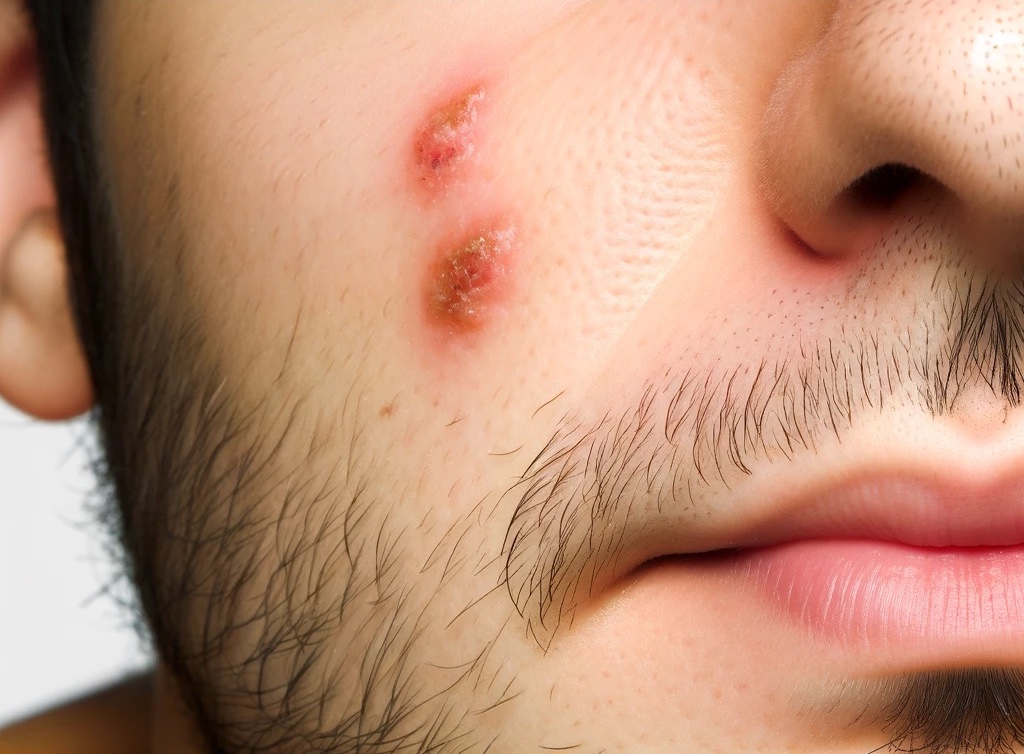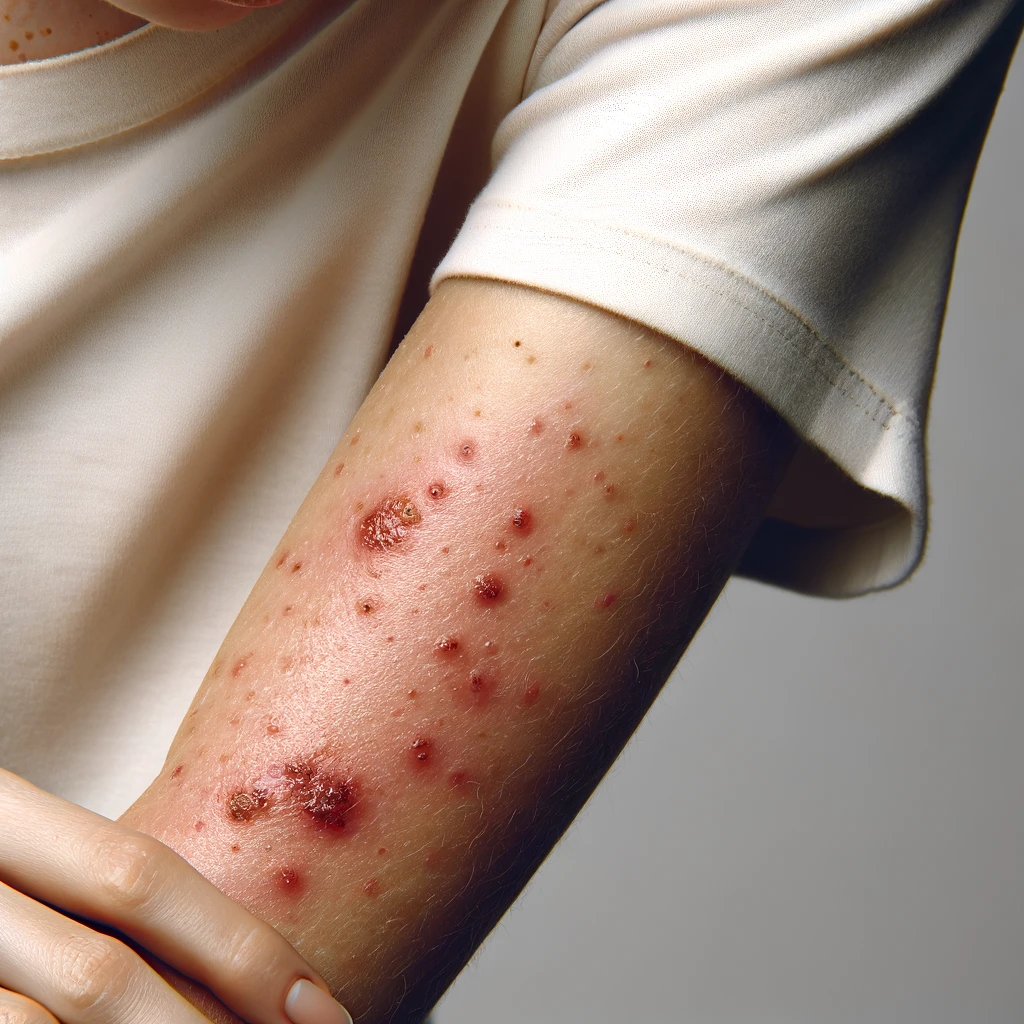Methamphetamine, commonly known as meth, is a powerful stimulant that affects the central nervous system. Its use not only leads to severe physical and psychological effects, including skin sores, but also significantly increases the risk of meth addiction. This article is designed to help you recognize meth sores as an early indicator of potential meth addiction, enabling you to better understand and support someone who might be struggling.
What Do Meth Sores Look Like?
Meth sores, or lesions, typically appear as red, inflamed patches on the skin. They can also be crusty and may ooze. These sores often result from skin picking, a common compulsive behavior among meth users due to the sensation of bugs known as “crank bugs” crawling under their skin. This condition is medically referred to as formication. Meth sores are most commonly found on the face, especially around the mouth and cheeks, but they can also appear on arms, legs, and other parts of the body.
You can also learn about how to tell if someone is on meth.


Causes of Meth Sores
Chemical Irritation – Meth contains acidic substances that can irritate the skin. When users smoke or inject meth, these chemicals can aggravate the formation of sores.
Physical Effects – Neglect of personal hygiene is typical in active meth users, contributing further to skin deterioration. Continuous scratching and picking at the skin increase the risk of developing open sores.
Psychological Effects – The intense high from meth often triggers paranoia and anxiety, leading to compulsive scratching and picking.
Timeline and Progression of Meth Sores
Early Signs – The first signs of meth sores may be subtle—slight redness or small scratches. These can quickly become more noticeable as meth use continues.
Progression – With ongoing use, these sores can become infected, leading to more significant medical issues such as abscesses or systemic infections.
Stages – In chronic users, sores may cover larger areas of the body and become difficult to heal, often leaving scars even after cessation of drug use.
Helping Someone With Meth Sores
It’s important to approach someone you believe is using meth with compassion and concern. Avoid judgment and express your willingness to support them in seeking help. Recognizing meth sores can be the first step in helping someone overcome meth addiction. By understanding what these sores look like, why they occur, and how they progress, you can better support your loved one in their journey toward recovery.
Remember, help is available. Contact us at Recovery Services of Connecticut to find out more about treatment options and how you can support a loved one dealing with meth addiction. Together, we can make a difference.
